Ficus Trees….Too Much Hassle?
For quite some time, I’ve been considering writing this post. I’ve hesitated due to the overwhelming affection people have for ficus trees (Ficus nitida). While the benefits of planting ficus trees are apparent. They have lush beauty and dense shade that are particularly valuable in desert environments. There are a few considerations to bear in mind before incorporating them into your landscape.
At first, the benefits of planting a Ficus tree are obvious. They are lush, beautiful and provide dense shade, which is sometimes scarce in the desert.
The Pros and Cons of Ficus Nitida Trees: What You Need to Know
So what’s the problem with having a Ficus tree? Well, there are a couple of things that you should be aware of before you plant a Ficus tree.
One of the primary challenges with Ficus trees is their vulnerability to frost damage. This is especially concerning in low desert regions when temperatures drop below freezing. This concern becomes even more pronounced during stretches of consecutive freezing days.
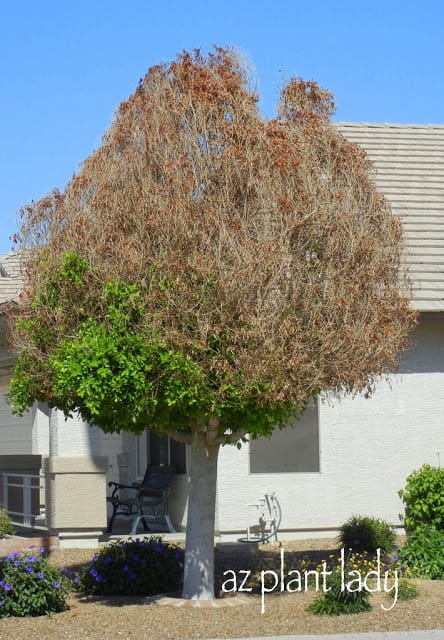
Photo: Frost-Damaged Ficus nitida
This past winter, we experienced a three-day period of temperatures in the low 20s. The impact on local Ficus trees was unmistakable. A mere drive through any neighborhood allowed me to distinguish, even from a distance, who had Ficus trees and who did not. The extensive presence of ‘brown’ trees gave it away.
After the return of warmer weather, many Ficus trees sported trimmed branches. This results in a shorter appearance due to frost damage mitigation (see image below).

Photo:Ficus tree that had frost damaged branches removed.
Growth Size and Control
The second challenge stems from insufficient research regarding the potential size of Ficus trees. Individuals often find themselves ill-prepared when the charming shade tree they planted rapidly becomes an overwhelming presence. Trees often seem to engulf their homes.
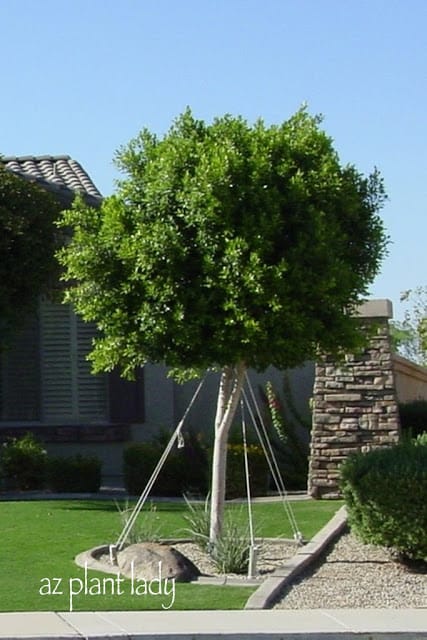
Photo: Young Ficus Tree
They are soon caught unprepared when the pretty, shade tree that they planted soon grows so large that it almost seems like it is ‘eating’ up the house….
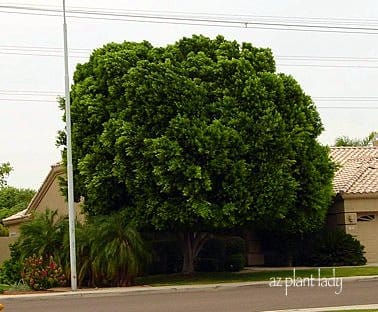
Photo: Mature Ficus Tree
What to Consider When Planting Ficus Trees
If your heart is set on having a Ficus tree grace your garden, go ahead and acquire one. Just remember that some winters might result in frost damage, temporarily affecting the tree’s appearance until new branches emerge. To ensure a successful experience with Ficus trees, keep the following points in mind:
- Proper Placement: Exercise caution when choosing a planting spot. Allow ample space for the tree to reach its mature dimensions without infringing on your house. Additionally, avoid planting near patios and pools, as the tree’s shallow roots can pose problems with insufficient watering. Ficus trees can attain heights of 30 to 50 feet and widths of 40 feet.
- Alternatives to Consider: While sissoo trees (Dalbergia sissoo) might appear to be an attractive alternative to Ficus, they also come with their own set of considerations.

Sissoo Trees as an Alternative
Sissoo trees, resembling Ficus trees in appearance, exhibit greater frost tolerance. Despite their appealing features, it’s crucial to exercise caution when integrating sissoo trees into your landscape.
Some people look to sissoo trees as an alternative to ficus – BUT, this isn’t advisable either.
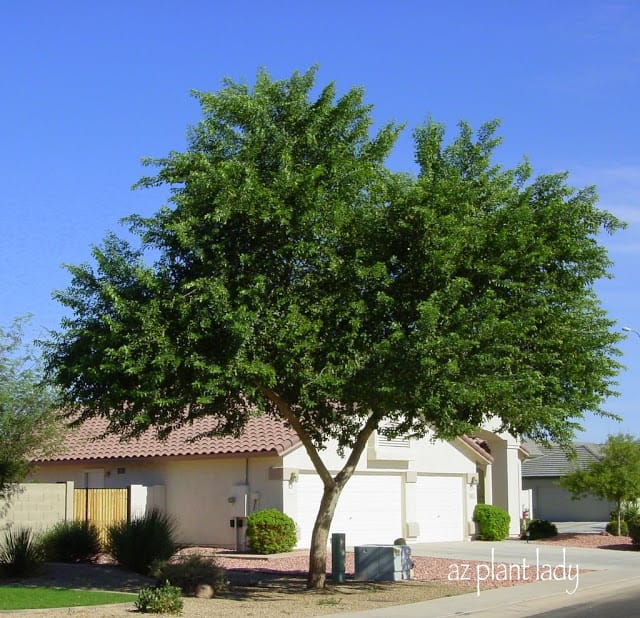
Photo: Sissoo Tree
The sissoo tree (Dalbergia sissoo) is similar in appearance to the ficus tree. They do however have greater tolerance to frost.
Like ficus trees, sissoo trees do grow quite large but I no longer recommend them for average size residential landscapes. The photo of the tree above was taken four years after it was planted from a 15-gallon container. It rapidly grew even larger. This tree made it’s debut in the Phoenix area about 15 years ago. It has become quite popular for its lush green beauty.
While sissoo trees flourish in larger outdoor areas such as parks due to their enhanced frost resilience, they present potential challenges for average-sized residential landscapes. Despite their initial popularity for their lush green beauty, their invasive root systems can wreak havoc on sidewalks, patios, pools, and block walls. Moreover, their eventual size can dwarf the landscapes they were intended to enhance.
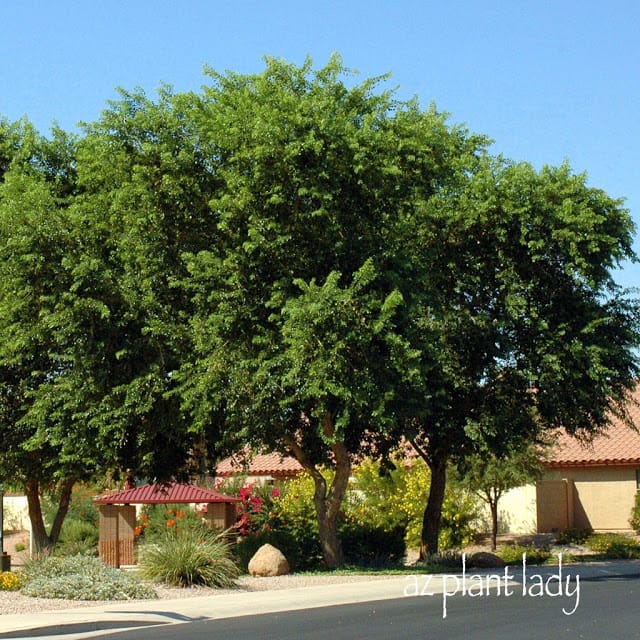
Photo: 3 Sissoo Trees
Careful Planning is the Best Approach for Ficus or Sissoo Tree Placement
The allure of Ficus nitida trees is undeniable, but careful planning and consideration are necessary to ensure a harmonious coexistence between these magnificent trees and your landscape. Understanding their susceptibility to frost damage and their potential for significant growth is vital for making informed decisions.
While sissoo trees can be a reasonable alternative, they too come with their own set of challenges that need to be weighed carefully. Ultimately, choosing the right tree for your outdoor space involves a blend of appreciation for aesthetics and awareness of practicality.

 Noelle Johnson, aka, 'AZ Plant Lady' is a author, horticulturist, and landscape consultant who helps people learn how to create, grow, and maintain beautiful desert gardens that thrive in a hot, dry climate. She does this through her consulting services, her online class Desert Gardening 101, and her monthly membership club, Through the Garden Gate. As she likes to tell desert-dwellers, "Gardening in the desert isn't hard, but it is different."
Noelle Johnson, aka, 'AZ Plant Lady' is a author, horticulturist, and landscape consultant who helps people learn how to create, grow, and maintain beautiful desert gardens that thrive in a hot, dry climate. She does this through her consulting services, her online class Desert Gardening 101, and her monthly membership club, Through the Garden Gate. As she likes to tell desert-dwellers, "Gardening in the desert isn't hard, but it is different."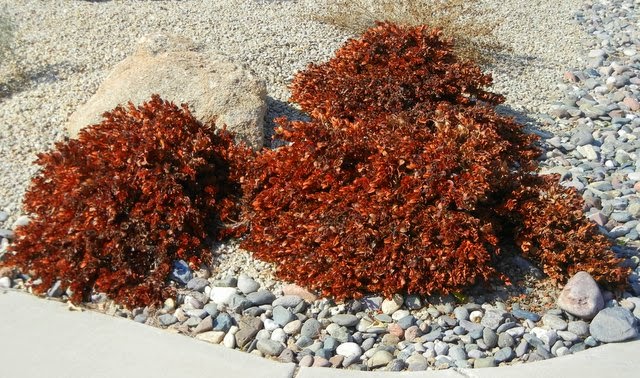
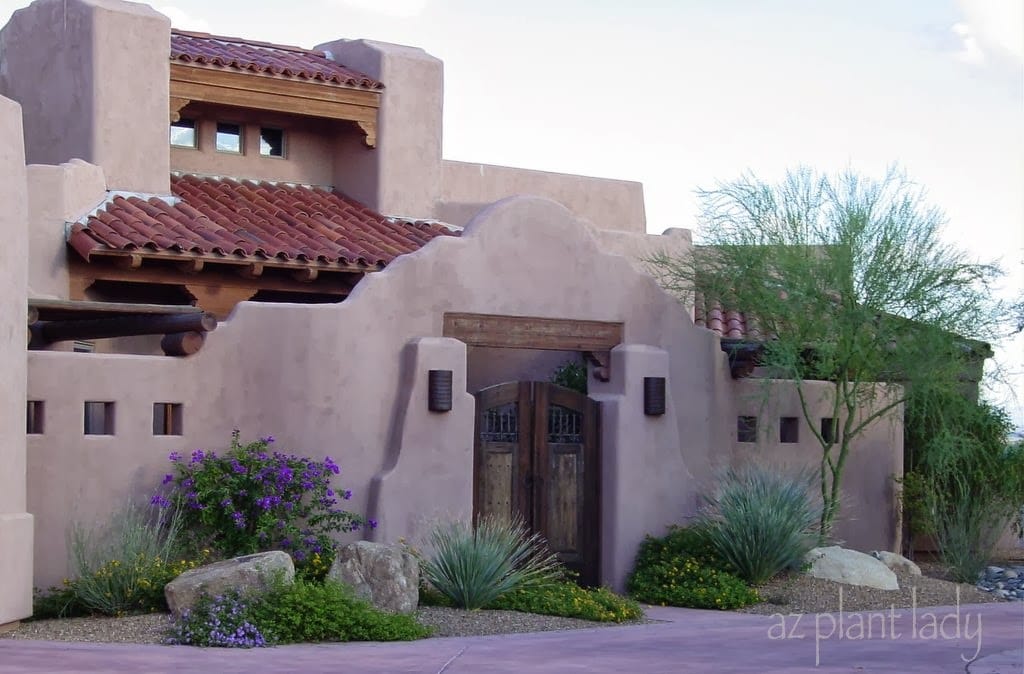
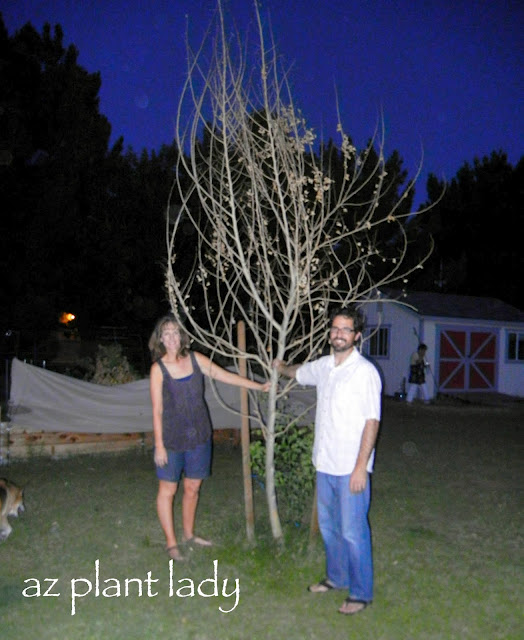

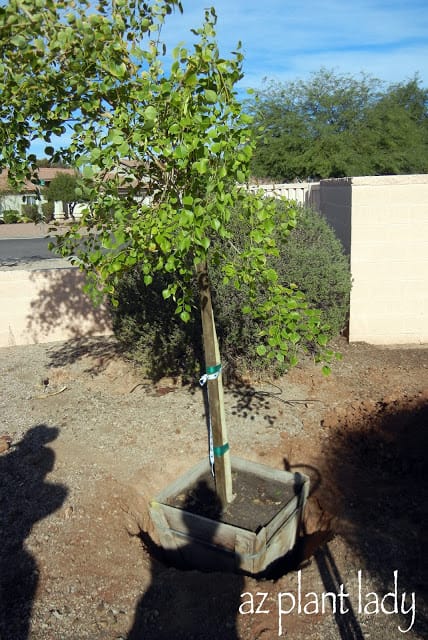









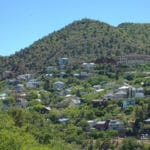
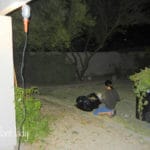
Excellent post!! I am writing about this tree in October during my 4 part tree series. The Ficus is quite the tree.
I had a wonderful Jacaranda tree the provided wonderful shade and beautiful purple flowers; sadly the roots invaded the foundation of our house and I had to have it taken down. I have a Chinese Elm in the backyard and though it loses its leaves in winter, it's a great shade tree for the the rest of the year.
I'm going to have to hire you sometime to take a look!
My favorite spot in the garden is sitting under a maple tree.
I was surprised that we had some Sissoo trees killed here in Wickenburg from the cold last winter, so they are not bullet proof!
It's amazing to see such huge Ficus trees since here they are "houseplants", and very picky ones at that.
My favorite shade tree is our big Japanese Maple. I call it our living sun umbrella.
Noelle, I'm just catching up with your blog after too long away. (The beginning of the school year has really left me scrambling.) I was startled to see a familiar name pop up in this post — Thousand Oaks, CA. When I was first just out of college in 1969-71, I worked for the Ventura County welfare department as a social worker. Although I lived in Oxnard and worked in Ventura, my closest friend lived in Camarillo, and Thousand Oaks was a place I drove through often. It really is a surprisingly small world! -Jean
Hi Jean,
What a small world. Most people have never heard of Thousand Oaks. It is still a beautiful place, but it has changed a lot since I moved away 25 years ago 🙂
Hi,
I have been looking for a fast growing tree…that does not shed it's leaves in the winter because living in Camarillo in winter can still be very warm….when I saw that you lived in Thousand Oaks …well that was a surprise! What a small world indeed! Anyway, I like the Sisso tree but hear that the roots are a prob-Brendalem. I'm hoping I can find a fast growing tree to get planted….would a sisso be a good choice?-Brenda
Hi Brenda,
Small world indeed! Camarillo such a lovely place – I had a boyfriend from there when I was in high school 🙂
In regards to using a sissoo tree, I would advise against it in California, as it would most likely be even more invasive in regards to its root system.
I don't confess to be an expert with California trees, but I would recommend that you visit the Thousand Oaks Botanic Garden to see what type of trees that they have growing. You may be able to see a few that would work in your garden. If you don't know what type of tree it is, take a photo of the entire tree and then a close up one of its leaves and bring it to your local nursery, who can help identify it for you.
I hope this helps!
Noelle – AZ Plant Lady
Thank you all your useful information about the Ficus.
BUT…
I cannot believe people are still recommending sissoo trees!
The sissoo tree is considered as WEED tree in India! They are very invasive.
They are one of the terrible trees. They may be fine when planted in a wide open space. But for my knowledge, lots of HOAs require builders to NOT plant sissoo in the HOA maintained landscape areas. The Mulberry community in Mesa just spent thousands dollars to take out all the sissoo trees on their streetscape. because they don’t want to get suite by the HOA.
Hello,
Thank you for your comments. While it’s true that sissoo trees are considered to be invasive in parts of the world, they, like other plant’s invasiveness are controlled in our arid climate. It is true that if sissoo trees aren’t correctly maintained or planted in the wrong area that they are problematic. However, when given enough room to grow, with plenty of root space, and deeply watered as is recommended for all trees, they work in certain areas. Keep them away from grassy areas as their roots grow toward the surface as opposed to areas where they are watered by drip irrigation.
HI, I LIVE IN RANCHO MIRAGE CA, AND I AM LOOKING FOR A HEDGE THAT WILL GROW TALL NEXT TO A LONG FENCE FOR PRIVACY. IS THERE ANYTHING THAT WILL STAND THE HOT SUMMERS AND IN WINTER AN OCCASIONAL FREEZE ? MY GARDNER WANTS TO PLANT A FICUS , BUT AFTER READING ABOUT THEM I AM WORRIED ABOUT THE HEAT IN SUMMER BURNING THE LEAVES. CAN YOU SUGGEST ANYTHING ELSE ? THANK YOU SO MUCH , NANCY
Hello Nancy,
I understand your dilemma and don’t recommend a ficus. I would strongly recommend planting a row of hop bush (Dodonaea viscosa), which is an evergreen hedge that is drought tolerant, looks great all year, and can grow up to 10-12 feet high.
I hope this helps!
What do you think about Ficus nitida ‘columns’ as a hedge or screening plant? Does this variety get as big eventually too? I hesitate to spec them for a hedge because I’m afraid they will eventually get too big. I’m just curious about their growth habit compared to the regular Ficus natida.
Hi Erin,
Great question! From what I have been able to research, Ficus nitida ‘Columns’ seems to point to how they have been trained and not to a different plant and growth habit as I haven’t been able to find any citation pointing to that (I could be wrong, but haven’t been able to find a source that it is in fact, a different plant). I would be leery of using it against a wall or near a grassy area or planting bed with shrubs as the roots will outcompete those plants for water, which will leave them stressed. I hope that this helps!
I just went on line to find out how big the Ficus plant will get. I got a houseplant for Christmas a little over a year ago and it wasn’t doing to well so I decided to plant it outside in my back patio area. To my surprise, it has grown to over four feet tall and is still a bush, no a tree. I live in Sun City West Az and we do get a freez one in a while, so we cover it when we get the new report. What is going to happen when it gets too big for the patio area since it is planted next to my fence?
Hello Vicki,
There may well come a time that it will cause cracks in the patio, the foundation of your house, and fence. You may be pulling it out once it gets too big.
I’m researching trees for the yard in our new house and came across your excellent blog. At first I thought tipu tree but after doing some research I don’t think it’s evergreen and clean. We’re retired and my husband is no longer able to do much yard work and hiring it out is not in the budget. I’ve seen how cold weather ravages ficus in the Vally of the Sun and I’m leary. Any suggestions for evergreen and clean that provides shade? Space is not a big issue, the yard is very low to the ground desert at this point. One more factor, we’re not young anymore so fast growing would be a plus.
Hi Pat,
It’s hard to fit all those criteria. Fruitless olive trees fit some of the criteria but don’t grow fast. Mastic trees are evergreen and clean, but are smaller trees and are slow growing. Pine trees may work, but can be messy. My best advice is to choose the most important criteria from those listed above and get rid of the lesser ones, which may help you to choose the best one. Here is a link for more tree information. I hope this helps! http://www.amwua.org/plants/pdb-plant-detail.php?plant_id=25
Hi
I hope you are still posting. I noticed a lot of these were from 2011.
I have a dilema our neighbors that moved in not more than a month ago, we have yet to meet, have decided to go with a well known nursery here in Phoenix that has them planting Tipu trees right along their backyard fence that would block the view of their house which I respect privacy but they have also gone all along to the far north end of the wall where we get a beautiful view of a mountain range and no part of the house or yard they would use is there. They are planted no more than maybe 8 ft apart and already have 10 to 12 ft. trees planted. Ive heard from another friend who is a fantastic grower of all sorts of plants and is up to speed on different trees here in AS. My worry is they will block our beautiful view and really was unnecessary to plant so far down the wall. I have heard that some countries and some cities here in the U.S. have out lawed them due to their invasive nature. Any suggestions as to what we should look out for and if we get a chance to meet them see if they knew what they were getting?
Hello Jo,
I have seen and heard the same story many times repeating itself. Many people have no idea how large trees will grow and the potential damage that they can do. Unfortunately, a neighbor’s tree can impede the view from others. Tipu trees aren’t invasive in our arid climate. I would talk to them about the mature size of the trees and how much maintenance that they will require as they grow into each other. I’d also mention the fact that your view will be altered. Chances are that they never considered that. Approaching them with kindness can often do wonders. I hope this helps.
Hi I’m researching trees and I came across your fantastic blog! We live in Peoria, AZ and have a south facing window that gets blasted with sun in the hotter months and really would like to plant some sort of shade tree out there. Problem is, it is our side yard and it’s only 10′ wide between our house and the neighboring fence. Is it still possible to plant a small tree in that space without worrying about the roots hitting our foundation or messing with the fence? Thanks!
Hi Tracie,
Trees can be unpredictable when planted in close quarters. Your best bet is to plant a group of large shrubs that has been pruned into a small tree. Choices include hopbush (Dodonaea viscosa), Texas mountain laurel (Sophora secundiflora), or Mexican bird-of-paradise (Caesalpinia mexicana). Another option is to plant 3 ‘Orange Jubilee’ shrubs which grow 6-8 feet tall and will provide a nice green screen. I hope this helps!
I just cancelled my order for a ficus nitida but the nursery kept telling me invasive roots are not a problem in AZ. I switched to a fruitless olive since that is what has died (probably from grooming process every year). They said it would be ok if I didn’t mind the thorns. I saw that the fruitless should not have thorns. I would like your comments on the ficus root system concern here in the valley and if I will have thorns. Thanks
Hello Elaine,
While the ficus trees are beautiful, they can cause problems with their invasive roots. You can see some that have little to no problem, but then there are situations where they cause a lot of damage. Fruitless olive trees are beautiful and don’t have thorns. I hope this helps!
We have 19 ficus nitida trees in our office. The temperature is AC controlled and quite cold with decent sunlight. Do you have any suggestions of artificial lighting which will help in the tree growth. Currently we have 3 LED lights working at day light timings exactly above the trees.
The growth of the trees seems slow, however we do not have any yellowing of the leaves as of now.
Hello Adnan,
I don’t have any experience growing these trees indoors. I would advise contacting a company that specializes in interiorscaping – maintaining plants in an indoor environment.
Best,
Noelle
Our neighbors planted $15,000 worth of ficus trees last summer. If you recall we had a couple of freezing temperatures here in North Central PHX last winter and they were very worried about frost damage. Through a local nursery they got a spray that you spray on plants to protect them from frost. It works great, no frost damage at all while I lost about the top 6 inches of my ficus trees without the spray. Needless to say, that is on my shopping list this fall and I read it can be applied several weeks before expected frost and lasts through the winter. Goodbye frost clothe hello spray.
Hello William,
Thank you for sharing this experience! Hopefully, it will be helpful for others as well.
I just purchased the ficus nitida from Moon Nursery for a small area in front of my small townhome. The placement is 8-10 ft from my home and about 4ft from a sidewalk. Why would they recommend this for me? I am looking for a fast growing shade tree to help with my west exposure that has to be approved by the HOA. But now reading here and other articles I am extremely concerned with the damage it may cause down the line to my home and the complex property. I want to attend the HOA meeting and explain my concerns so they deny the tree as I had the Nursery write the order is canceled if HOA does not approve. But I would like to know how happy are you with the Fruitless Olive tree? I need an easy maintenance tree, hopefully fast growing and lots of shade coverage. Appreciate your help.
Hello Debi,
You are correct that Ficus nitida is not an appropriate tree for a small space. Fruitless olive trees are beautiful, yet slow-growing trees. Here are some helpful links where you can find information on many different trees, including their size and growth rate – http://www.amwua.org/plants/
https://mswn.com
I hope this helps!
Thanks for the great article. It has helped clear up some concerns. Last fall we bought a house in Indio, CA. One of the things we loved was the two massive ficus trees in the front, one of which sits in the courtyard blanketing it in shade and lush greenery. We knew nothing about the trees when we bought the house which does appear much like the “eaten” picture you posted. I spoke to a landscape designer today regarding plans to convert to desert landscaping. He told me they have to be removed. One is too close to the house (There is no visible damage to the house), both have been trimmed improperly and have surface roots. While I see his point (nothing will even grow under the dense shade) I am just so sad thinking about removing these beautiful trees. Is removal really the only thing which can be done once these trees have become so large?
Hi Dalene,
It’s hard to tell for certain without a site visit. I strongly recommend enlisting the services of a certified arborist who can make a site visit and see where the roots are in relation to the house. Sadly, chances are that it will have to be removed.